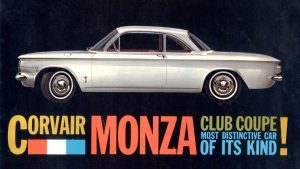
The De Tomaso Pantera was the result of an unlikely partnership between American Lee Iacocca and Italian entrepreneur Alessandro de Tomaso.
The Pantera’s fusion of Italian flair and American brawn made it a car with transcontinental appeal. Here’s a closer look at the history of the 1970 De Tomaso Pantera.
Who designed the Pantera?
The Pantera was designed by Tom Tjaarda, an American working for the Italian design house Ghia. Tjaarda wanted the car’s design to convey the power of the American V8 engine, and he achieved this by giving the car a muscular, animalistic look.

Equipped with a double wishbone suspension, disc brakes, rack & pinion steering, and a 351 Cleveland V8 engine, the car is a true powerhouse.
Who made the Pantera car?
Production of the Pantera car began with the fabrication of the bodies by Vignale. The completed bodies were then shipped to de Tomaso’s factory in Modena, Italy, where they were fitted with the suspension and driveline. The first cars were presented to the press in March of 1970 and were available in the United States in May of 1971. Lincoln-Mercury dealers handled sales in the U.S.
What engine and transmission did it carry?
At the heart of the Pantera is a powerful 351 Cleveland V-8 with a 4-bbl. carburetor. It produces a rumble very much in keeping with the Pantera’s appearance, thanks to the short-branch tubing headers. The power from the engine is regulated by a 5-speed ZF trans-axle, which has a 4.22-to-one final ratio.

The De Tomaso used the ZF gearbox, a known quantity, but it is a stopgap measure until an Italian-made trans-axle can be put into production. The engine’s capabilities are impressive, and it launches the car with gusto.
|
1970 De Tomaso Pantera |
Specs |
|---|---|
|
Price |
$10,000 |
|
Powertrain |
Ford 351 Cleveland 5.8-L V-8 engine |
|
Horsepower |
330 hp |
|
Torque |
318 lb-ft |
|
Transmission |
5-speed ZF manual |
|
0-60 MPH |
5.5 seconds |
|
Top Speed |
159 mph |
The Pantera’s engine is not just powerful, but it also sounds great. Each exhaust pipe feeds into a 2-outlet muffler that produces a rumble very much in keeping with the Pantera’s appearance. However, the engine is not without its flaws. In early production cars, the mesh grille below the back window has to be unbolted just to reach the dipstick, which is a colossal design flaw. Filling the gas tank, located on the left side of the engine just behind the driver, has to be done with the rear lid up and isn’t much easier.
Does it perform well?
Despite its weight of 3123 lbs., the Pantera is a speedy machine. It can complete a quarter-mile in just 13.9 seconds at 103.6 mph, and its disc brakes ensure a quick and safe stop. However, its handling can be tricky, with a tendency to oversteer abruptly in turns. This requires a skilled driver and a lot of muscle.
The initial reviews of the Pantera were positive, with Road and Track magazine calling the car “exciting but not a finished product” in 1971. There were some issues with the car, and a recall was issued for strengthened rear subframes, updated air conditioning, and fiberglass fuel tanks. De Tomaso argued that a car with exotic features couldn’t be produced at a price of $10,000 USD per unit to meet corporate engineering standards.
What were the issues & design flaws?

The Pantera’s design has its flaws, with poor bumper protection and excessive engine noise in the cockpit at cruising speeds. However, its most significant flaw is its vulnerability to damage during parallel parking in metropolitan areas. Despite these shortcomings, the Pantera remains a sought-after car for transportation and caprice.
What was De Tomaso’s relationship with Ford?
De Tomaso’s first collaboration with Ford, who made pantera car, was in 1963 when he developed the Vallelunga, a mid-engined grand touring car with a Ford Cortina engine. He then worked with Carroll Shelby and Ford to develop a replacement chassis for the “King Cobras” with an Italian body, but that project didn’t come to fruition. Lee Iacocca was intrigued by De Tomaso’s work when they set out to create a GT car that could be manufactured in large quantities and sold through Ford’s Lincoln Mercury dealerships.
The Partnership

The result of Iacocca’s vision was the Pantera. The car was designed with a steel unibody “monocoque” body rather than the more exotic backbone chassis of the previous De Tomaso cars. Its engineering was done by Gianpaolo Dallara, who had previously worked for Lamborghini. Ford held the rights to sell the car in the United States, with importation handled by De Tomaso of America Inc. and sales handled by the Lincoln-Mercury Division.
Final Thoughts
The De Tomaso Pantera was a car ahead of its time, combining Italian styling with American muscle. The car had its share of issues, but these were addressed in later models. The Pantera was a significant part of De Tomaso’s legacy, and it remains an iconic car today.
Ares Design, who makes pantera car’s modern reinterpretation, the Ares Design Project1 base it on the Lamborghini Huracan.





